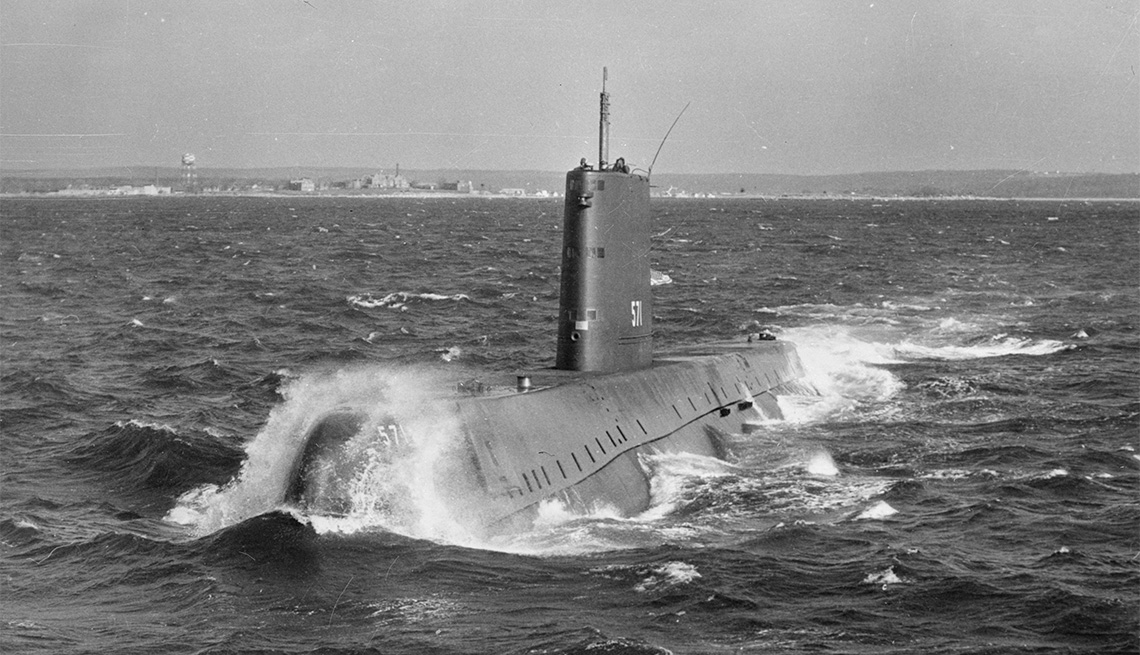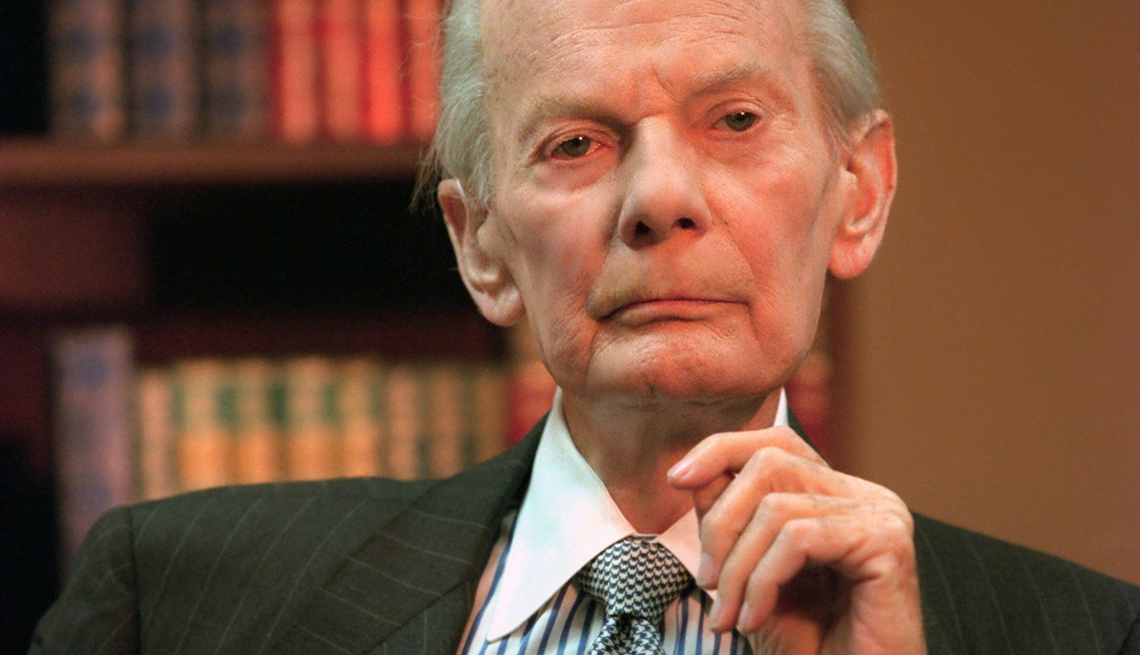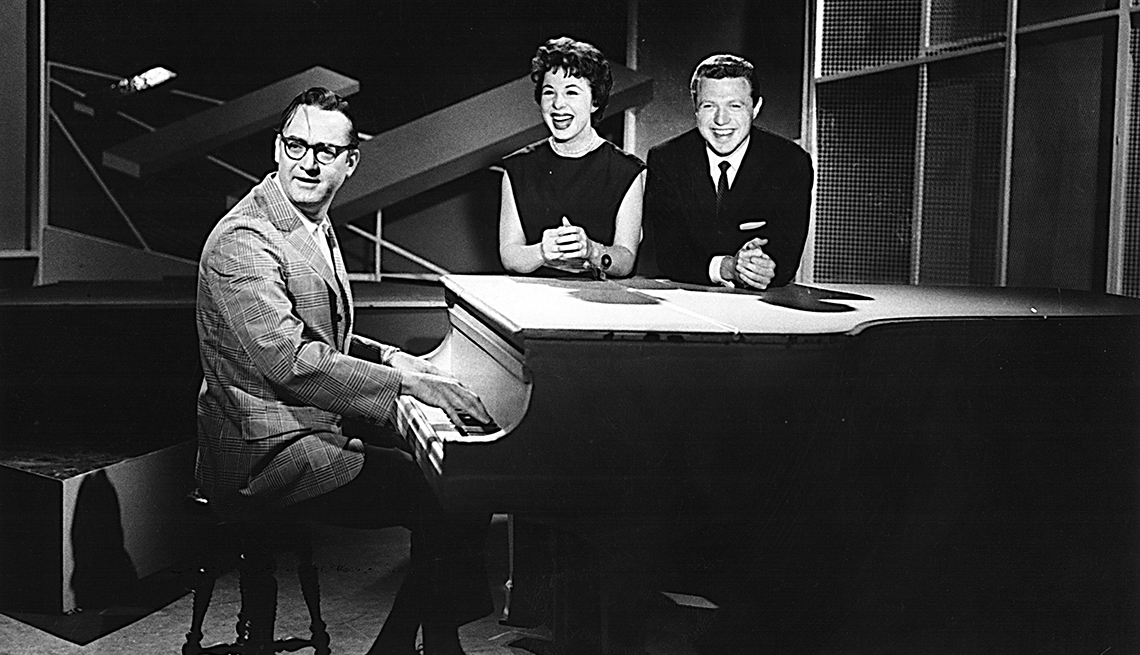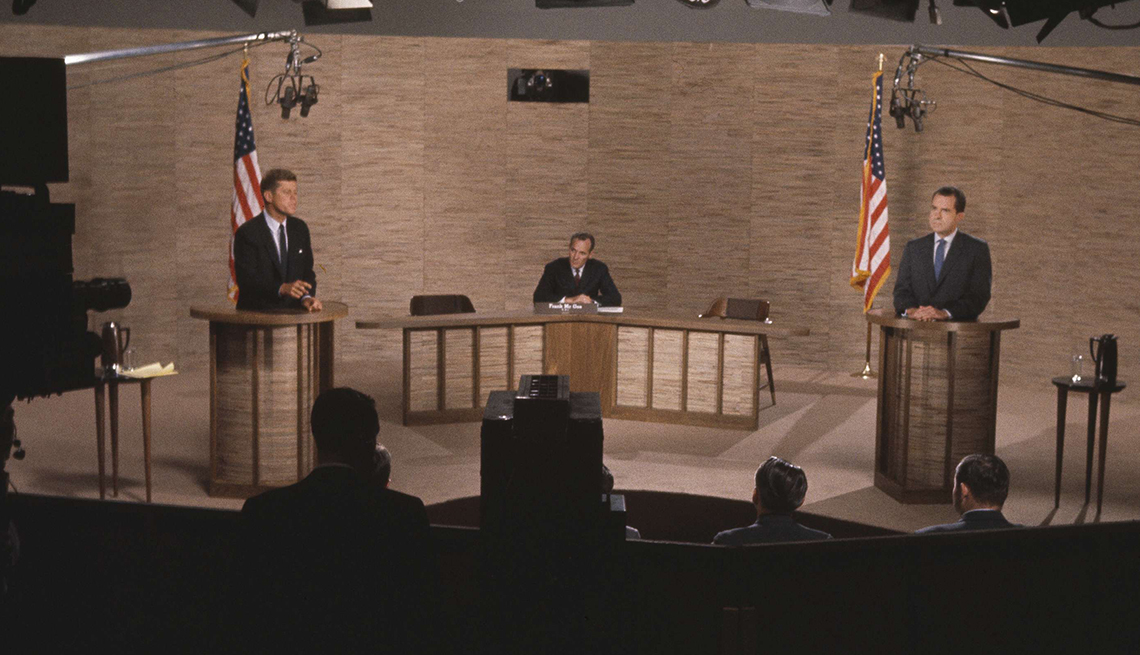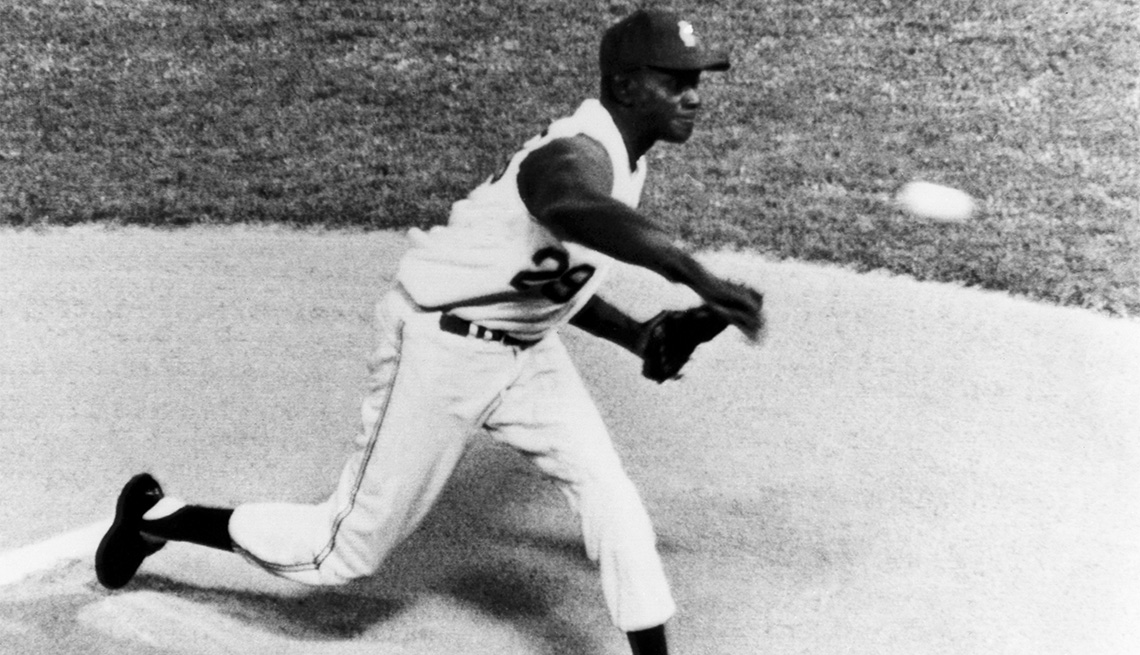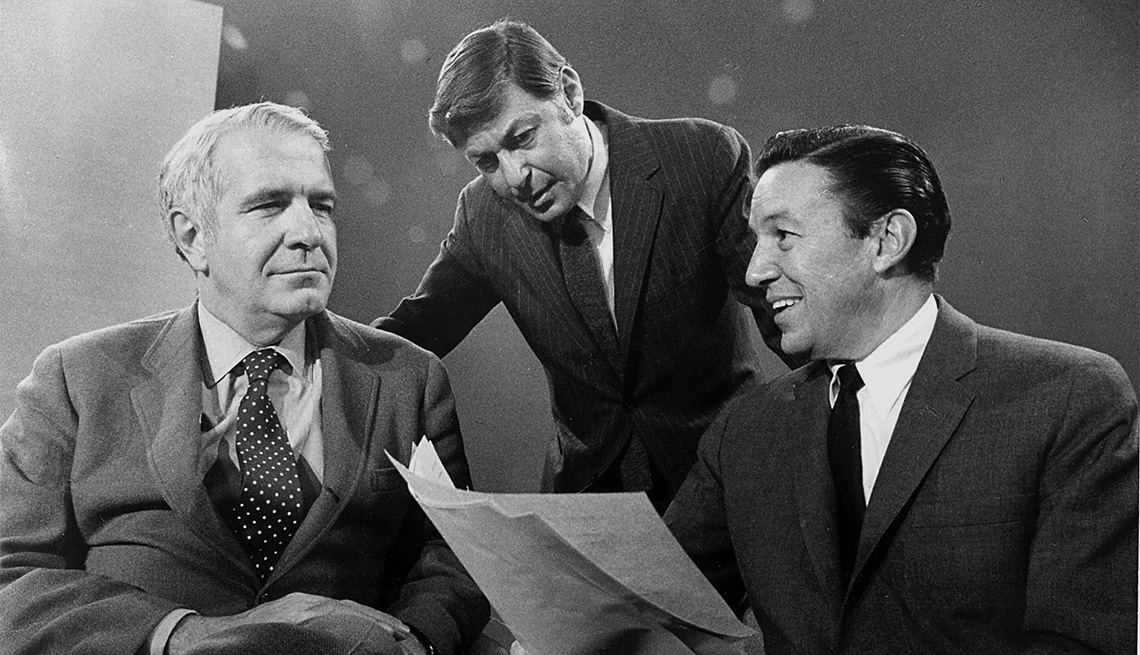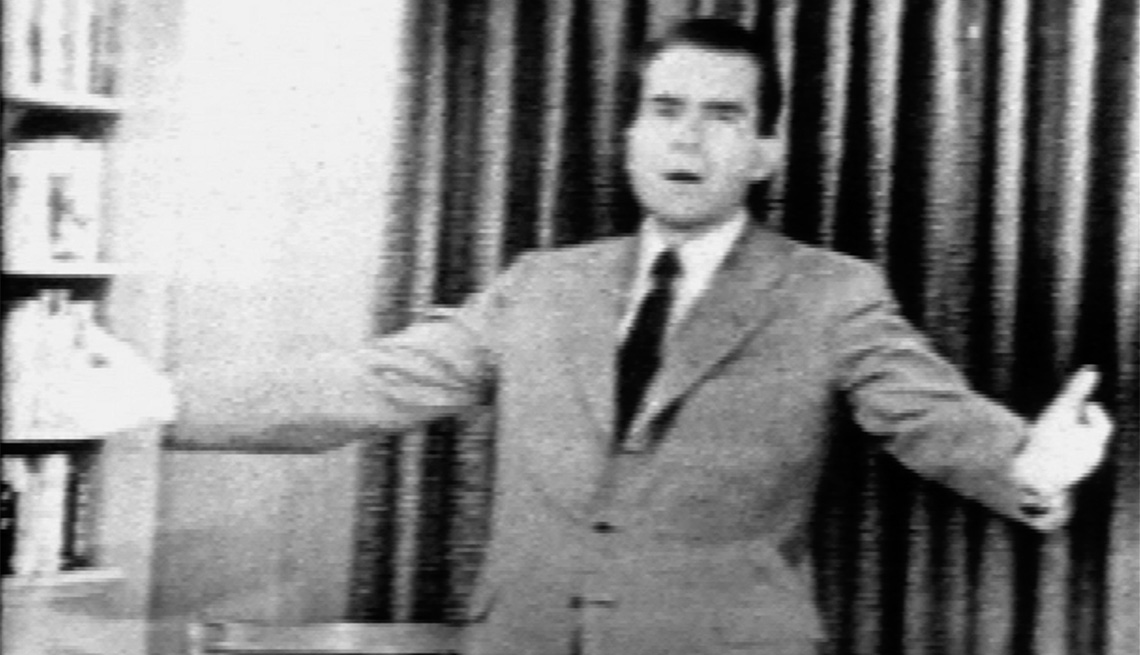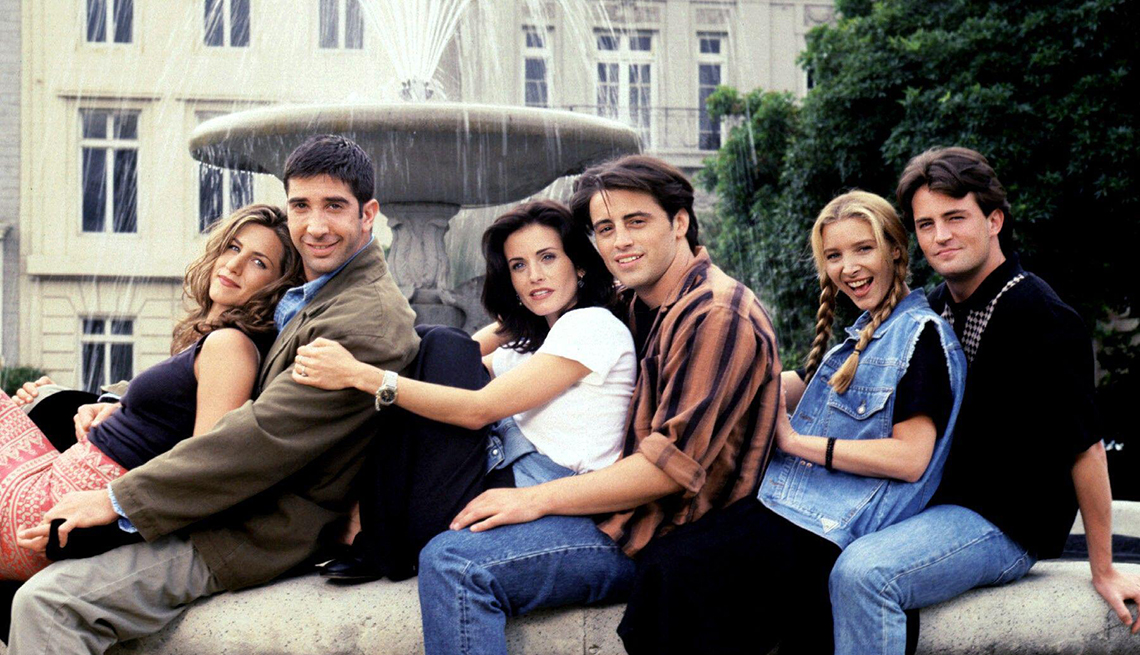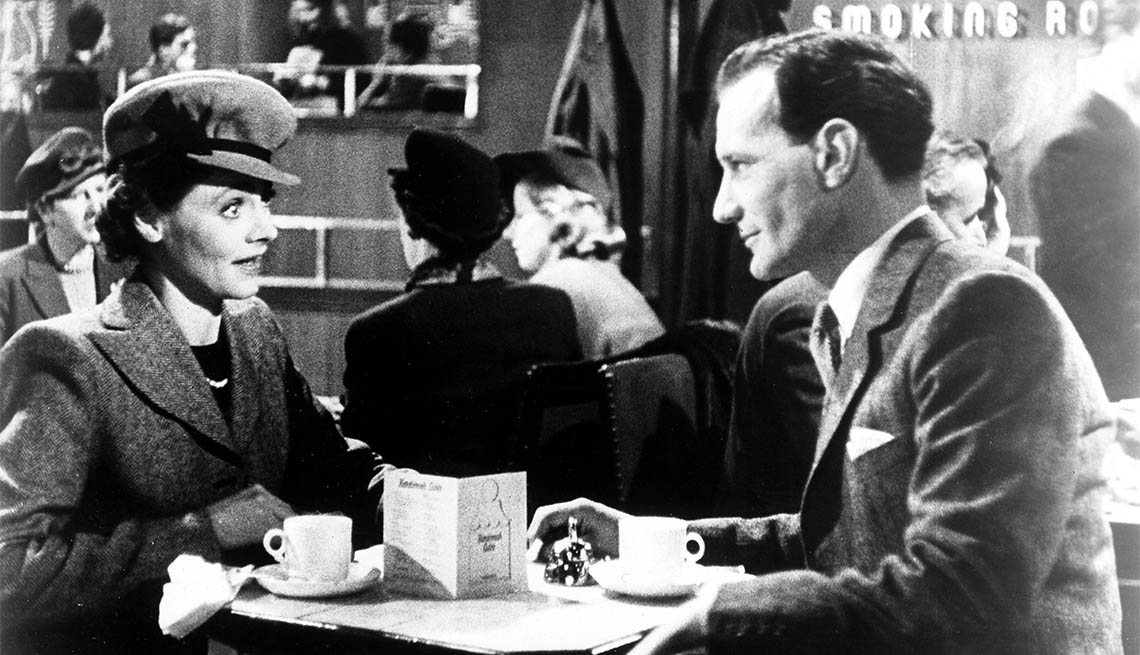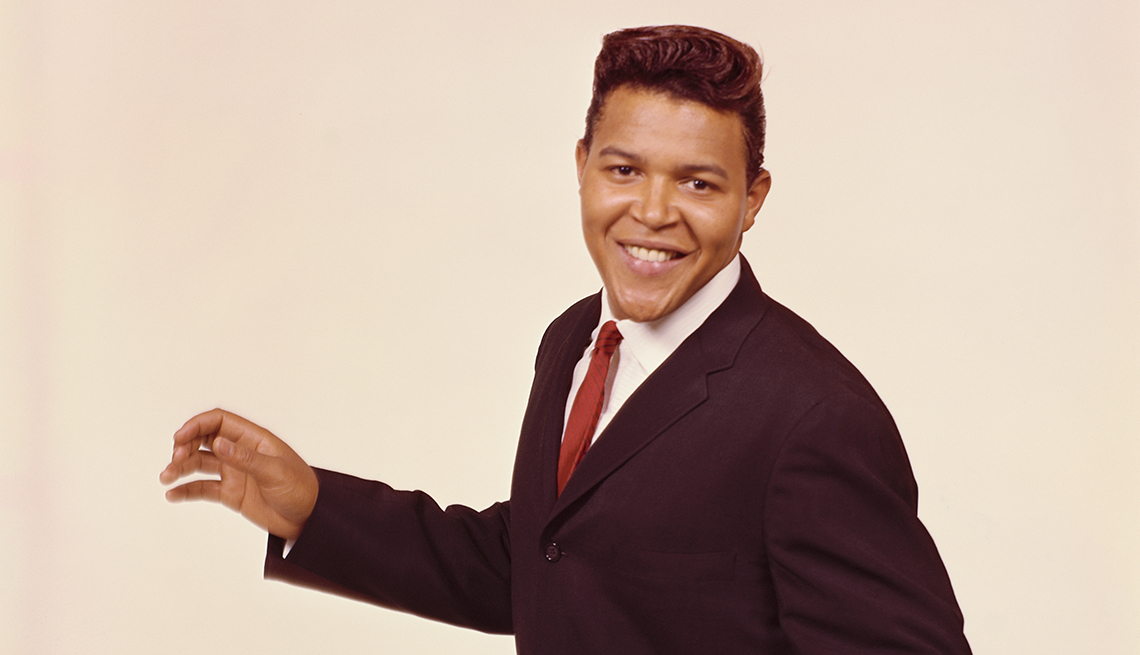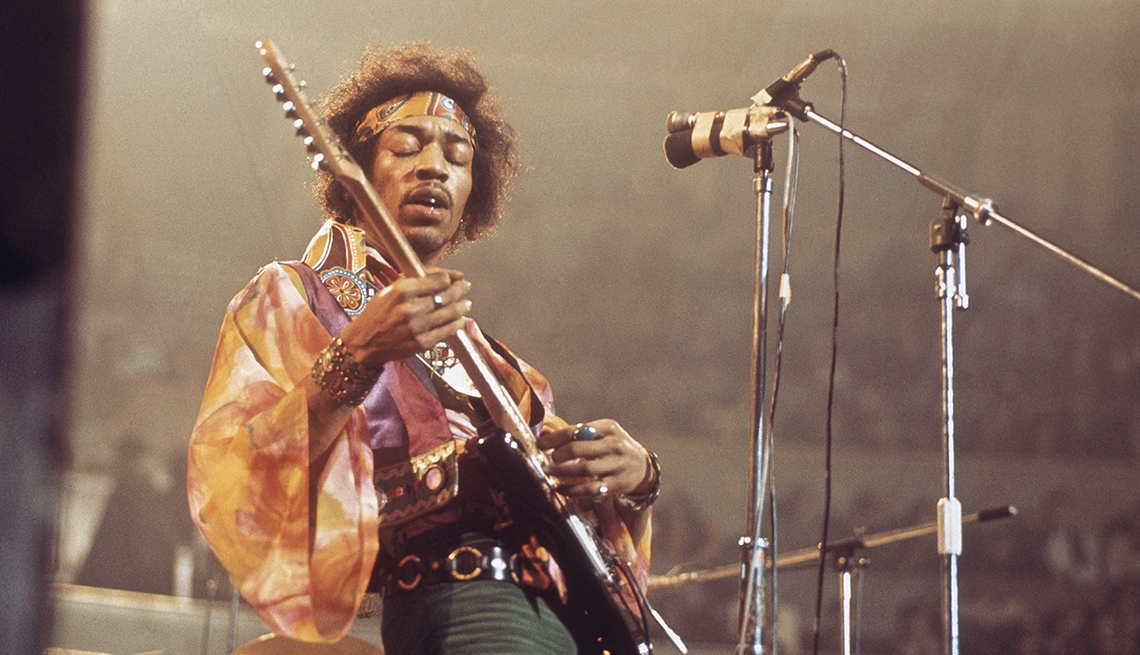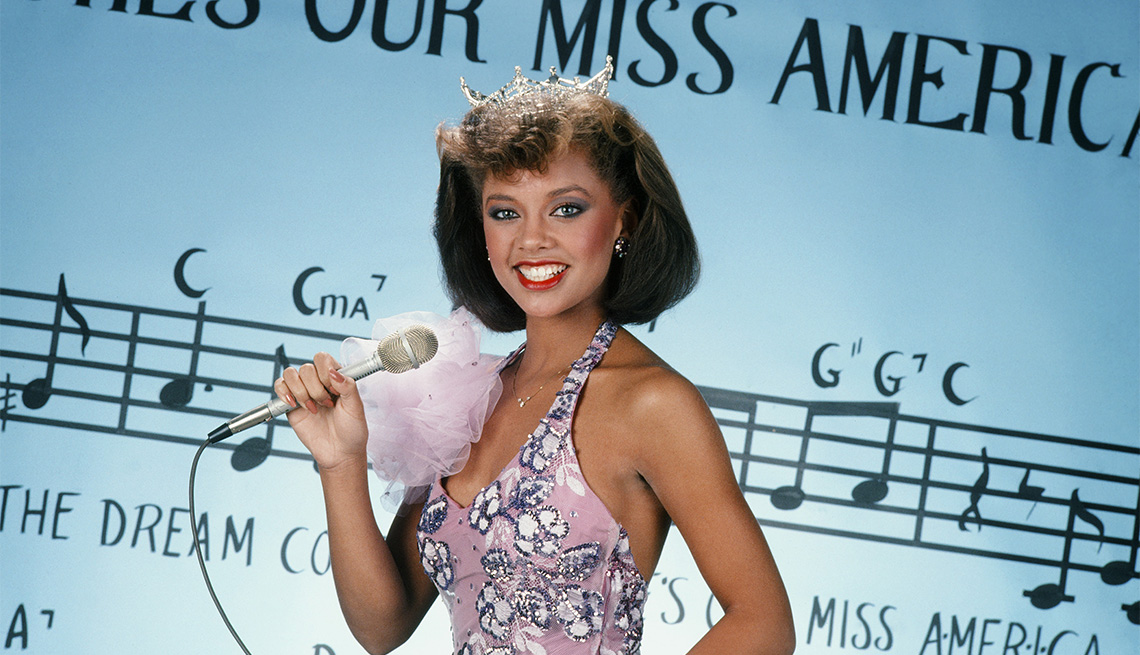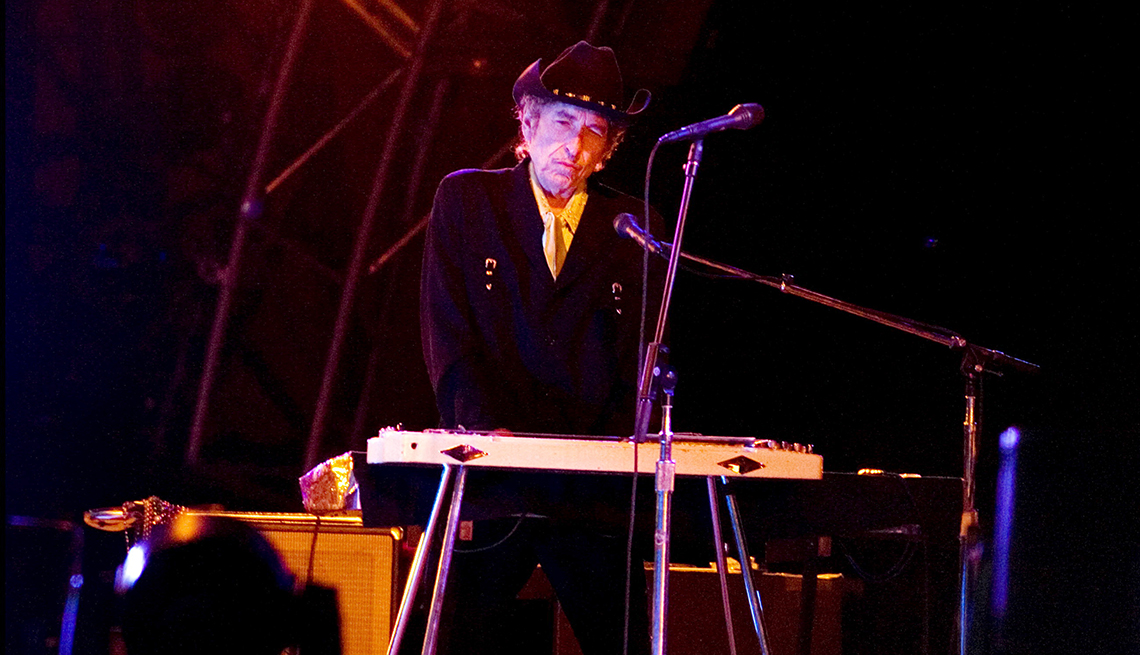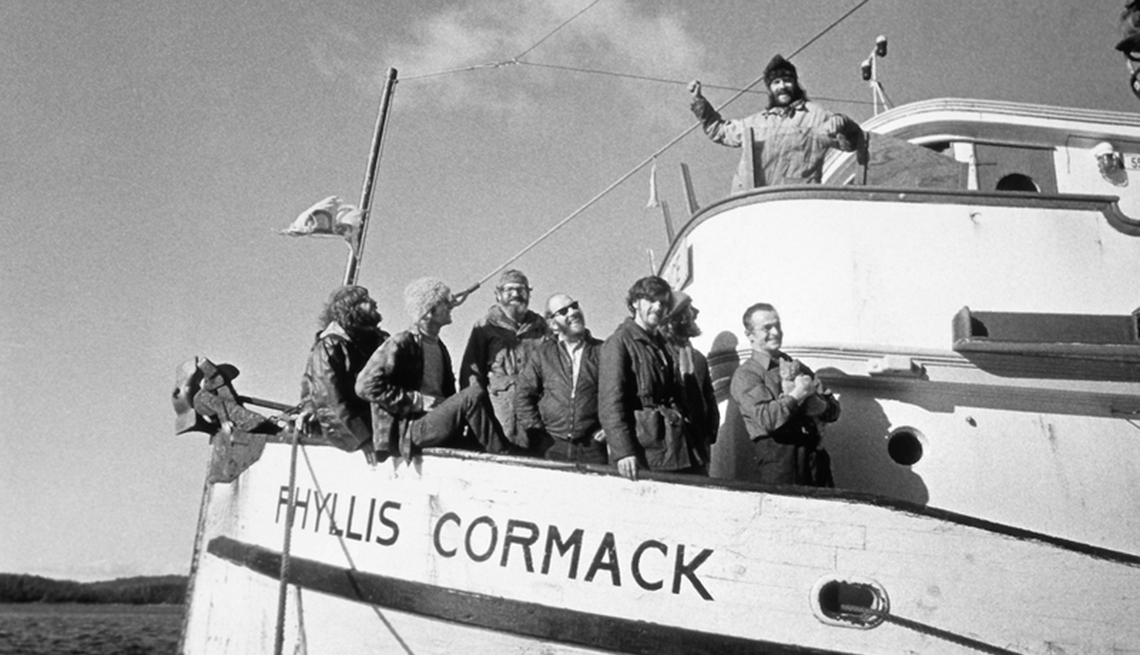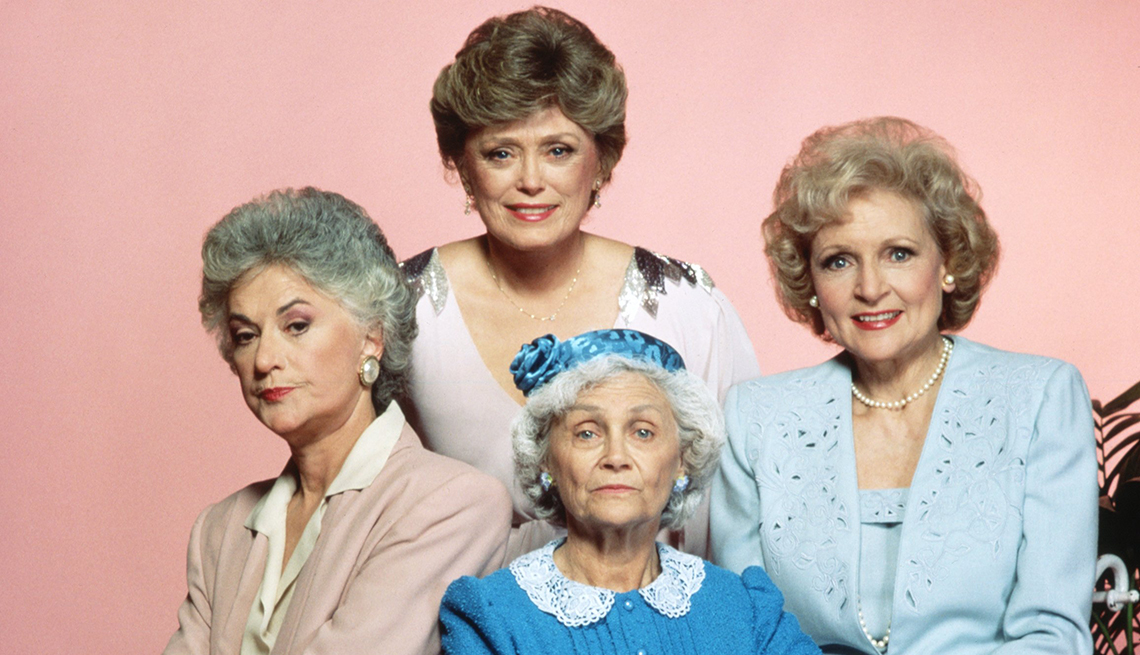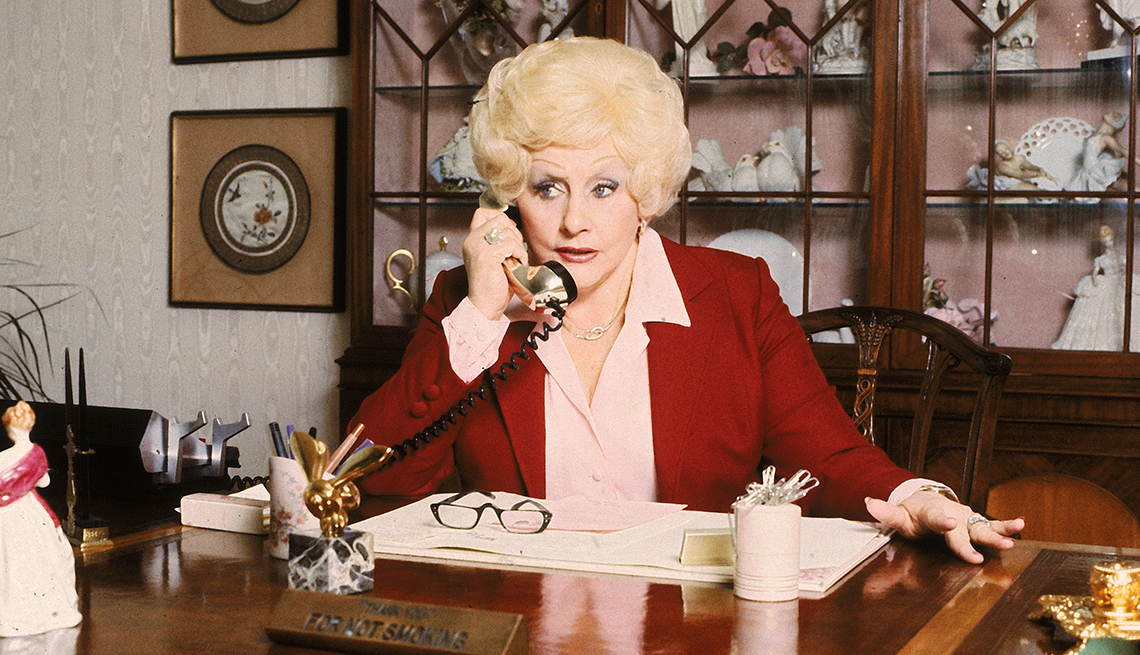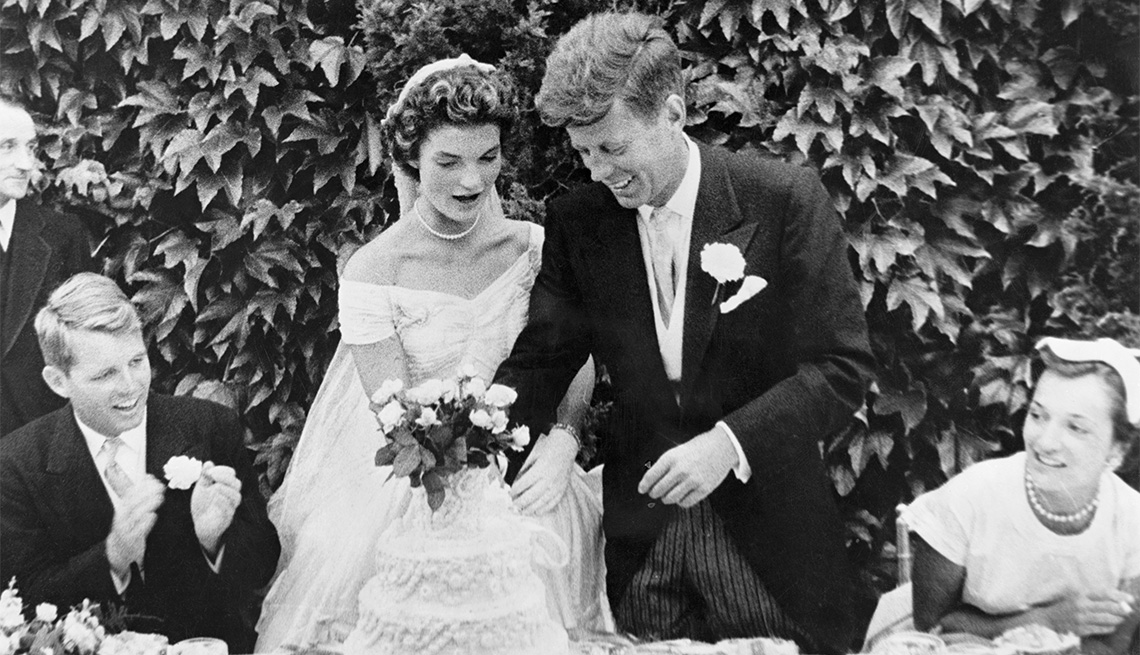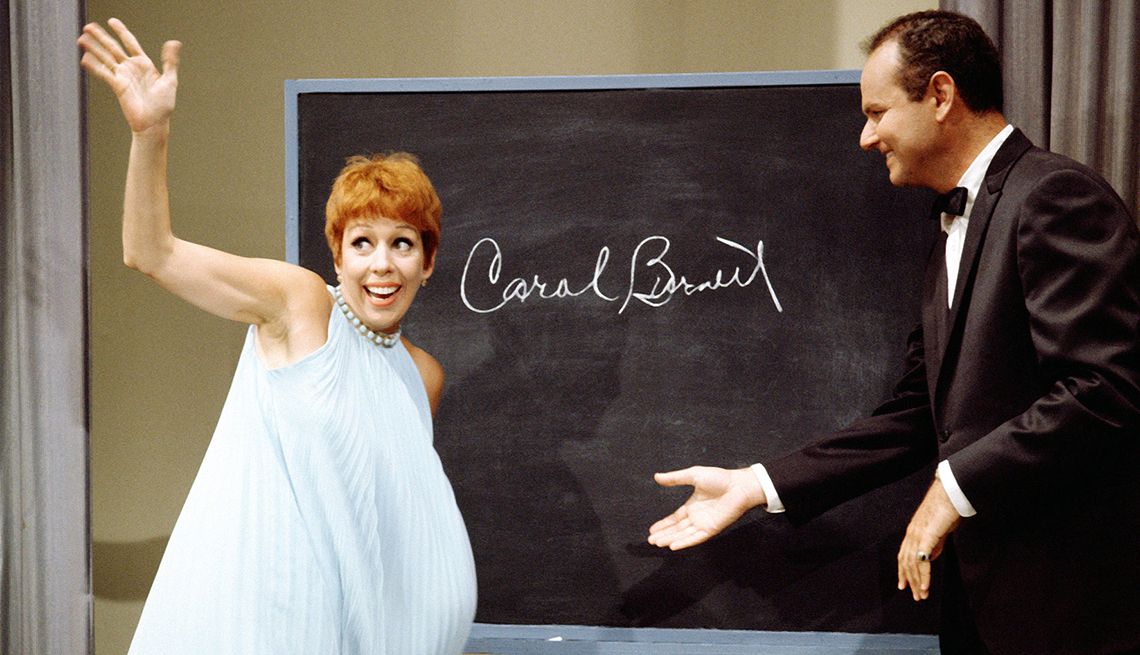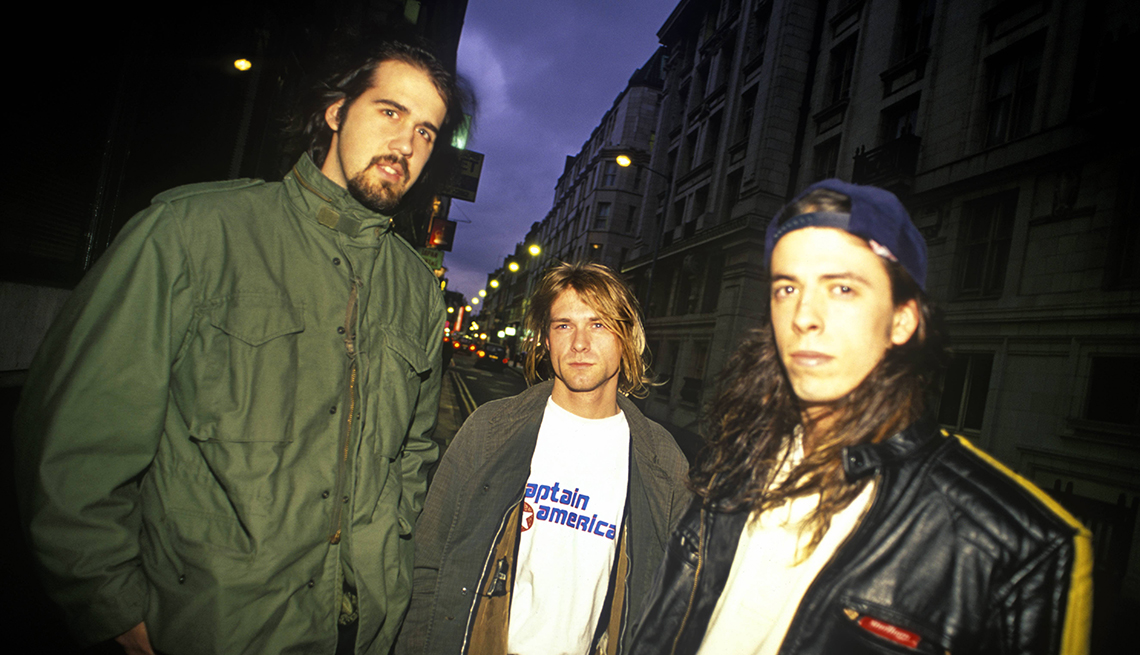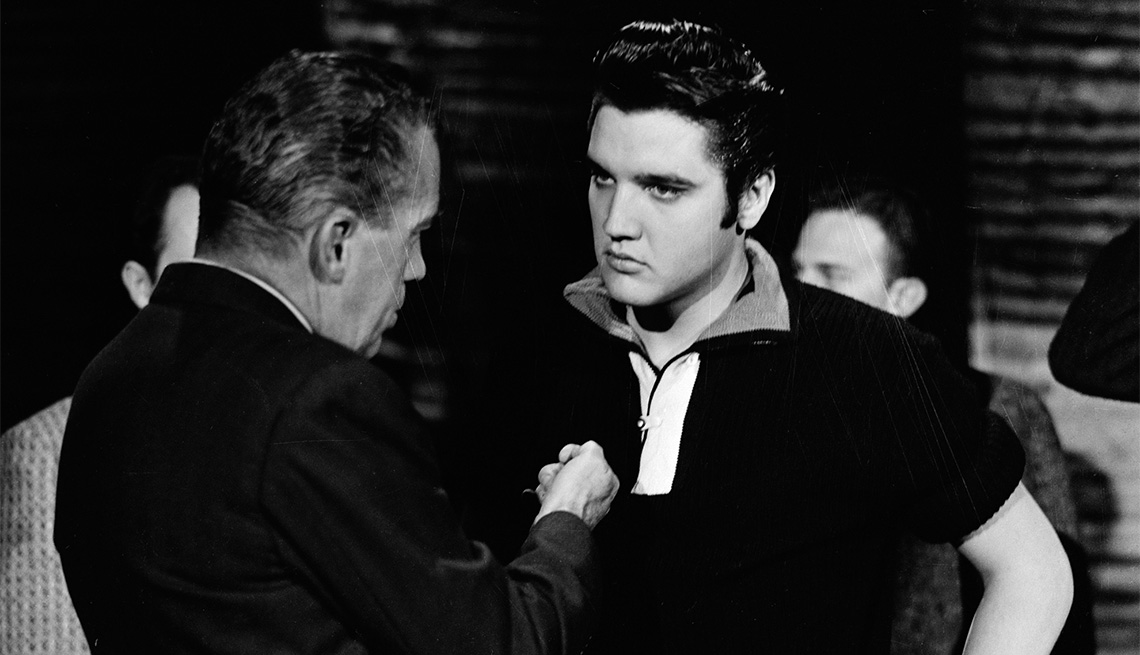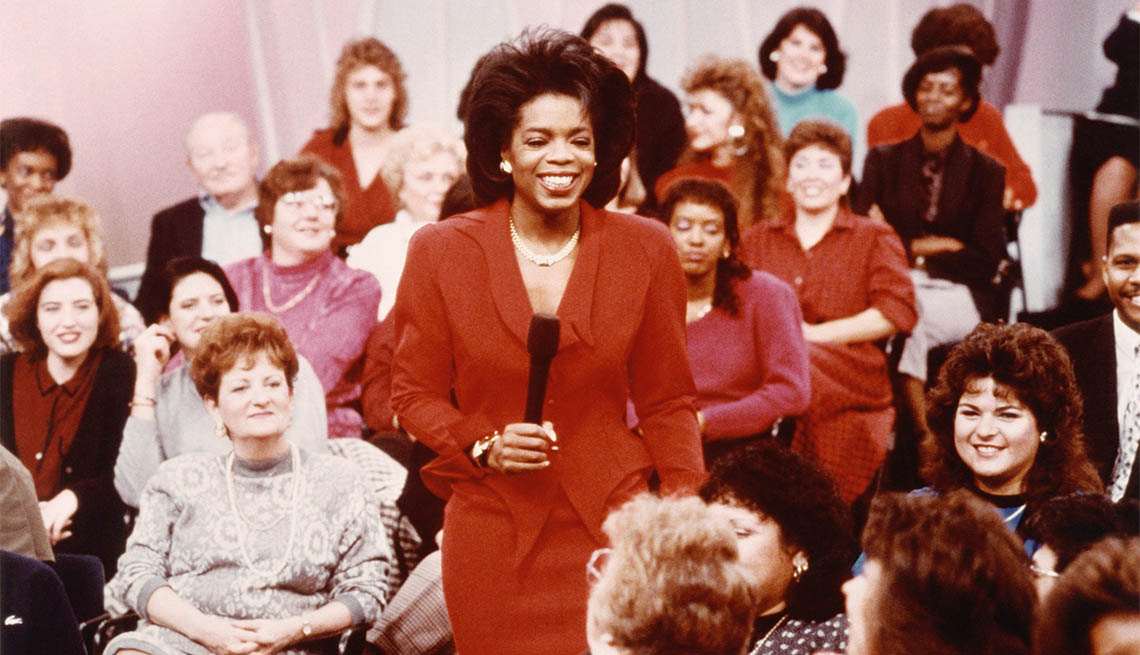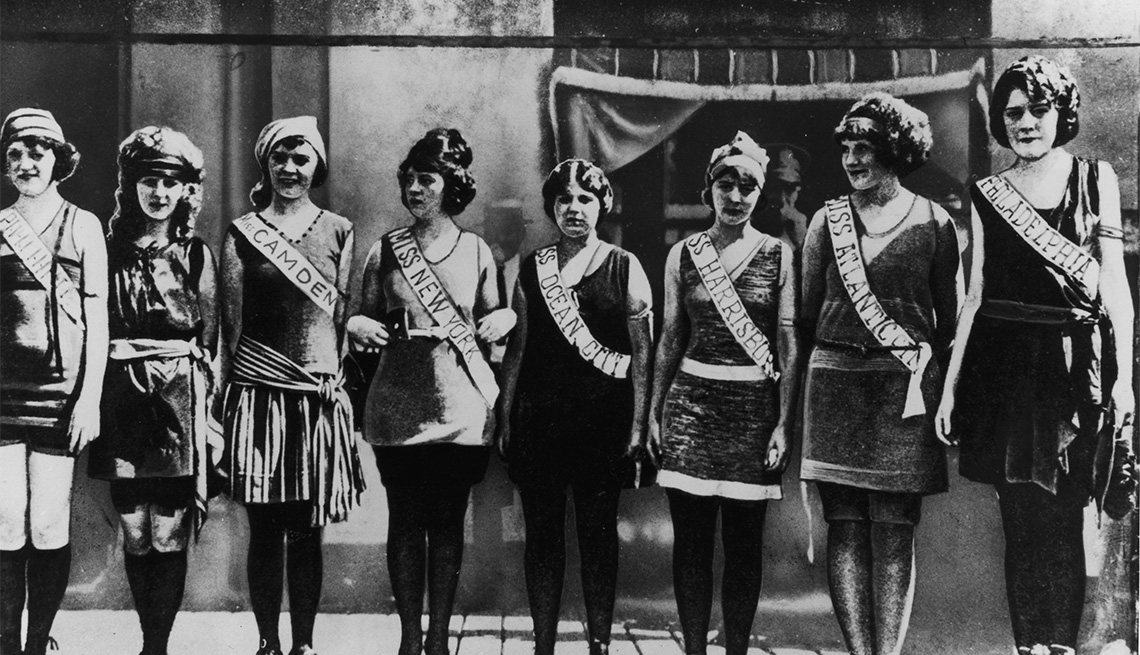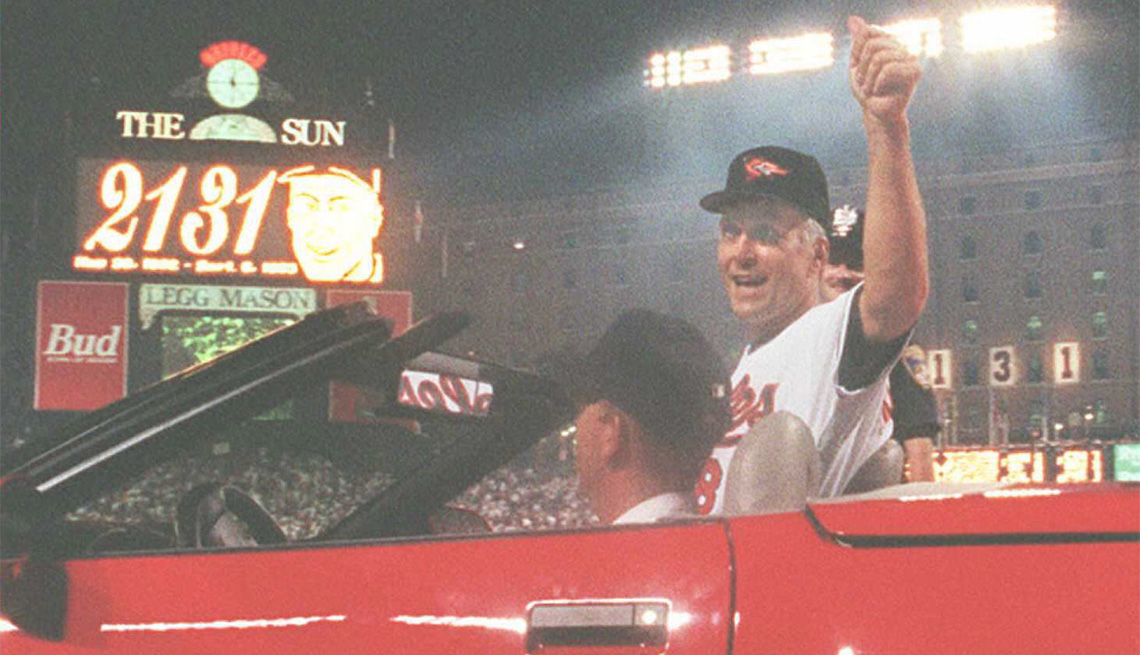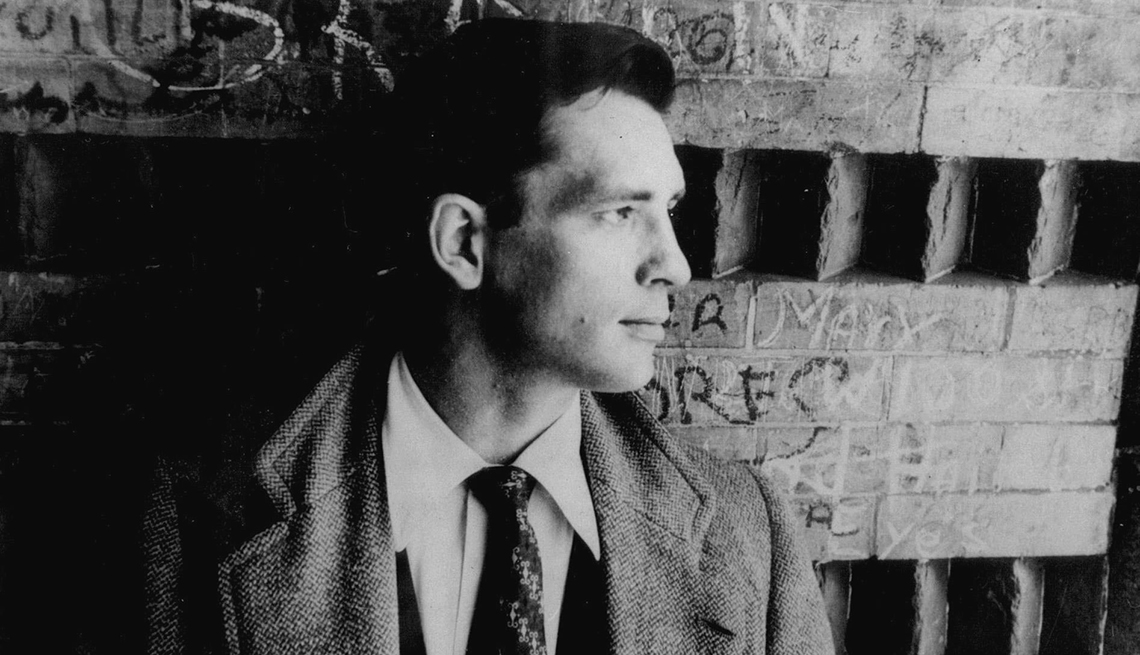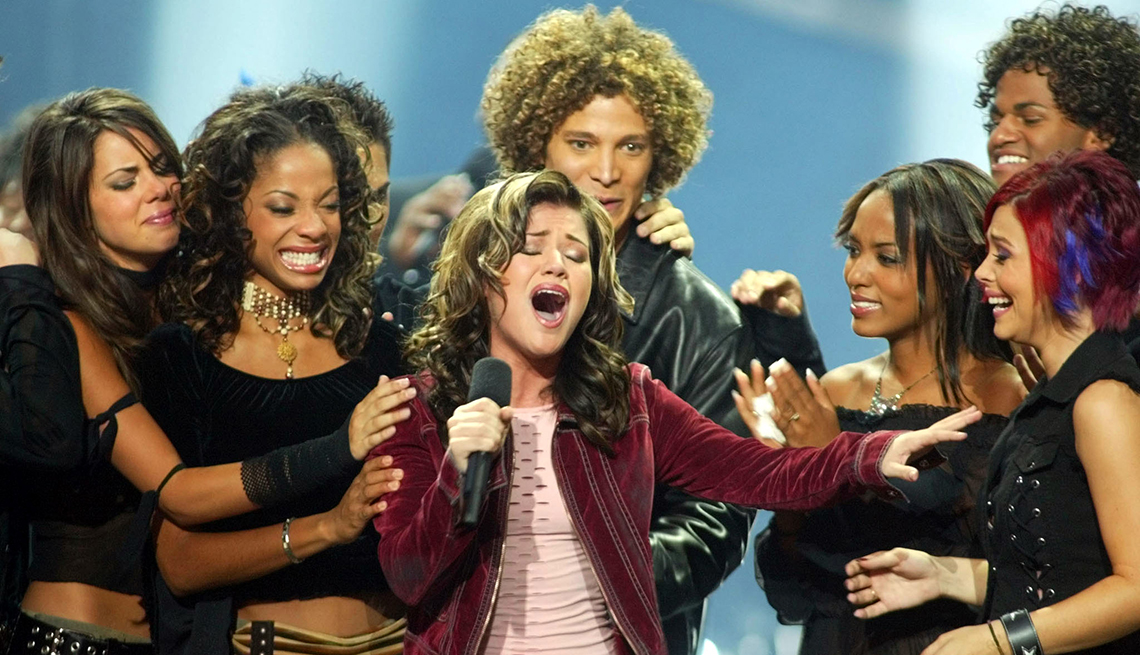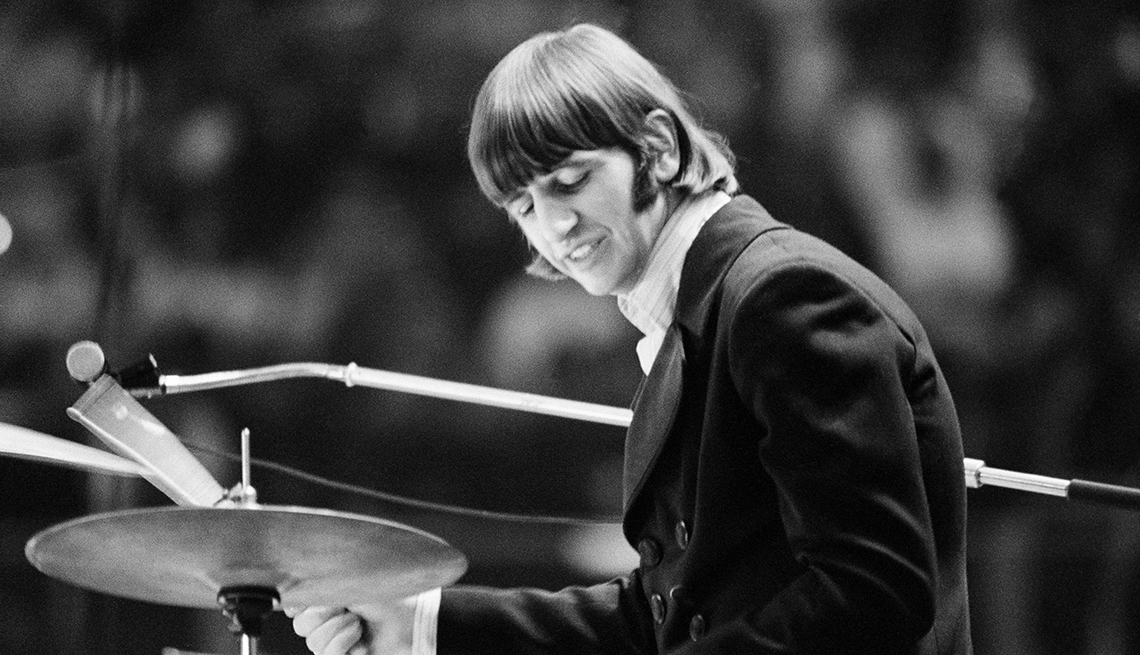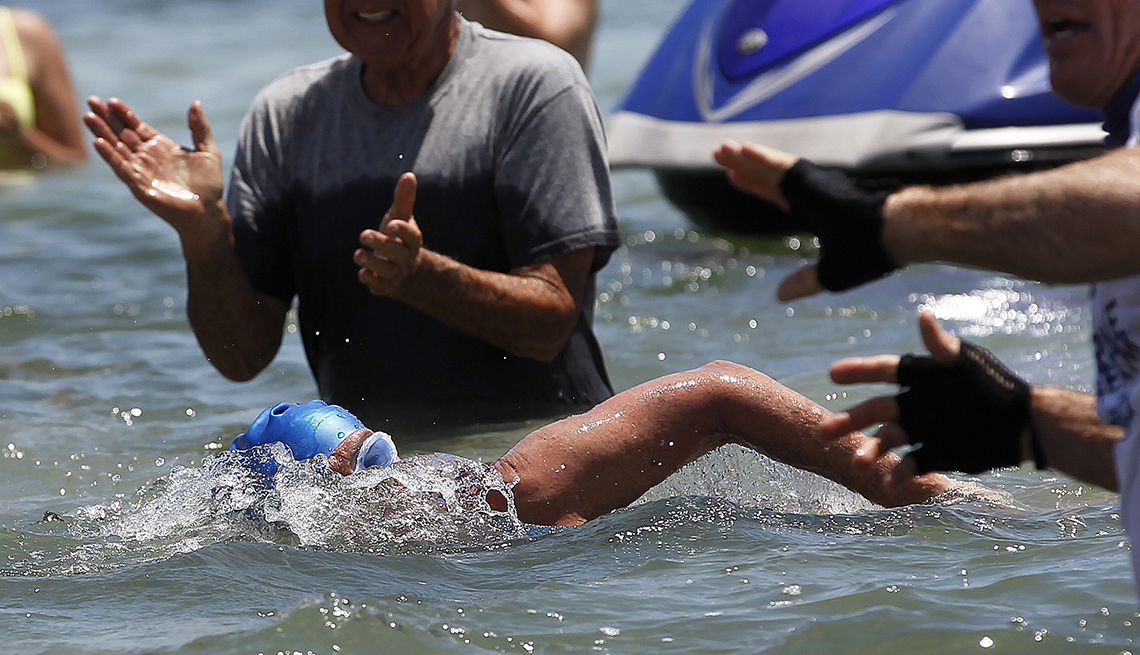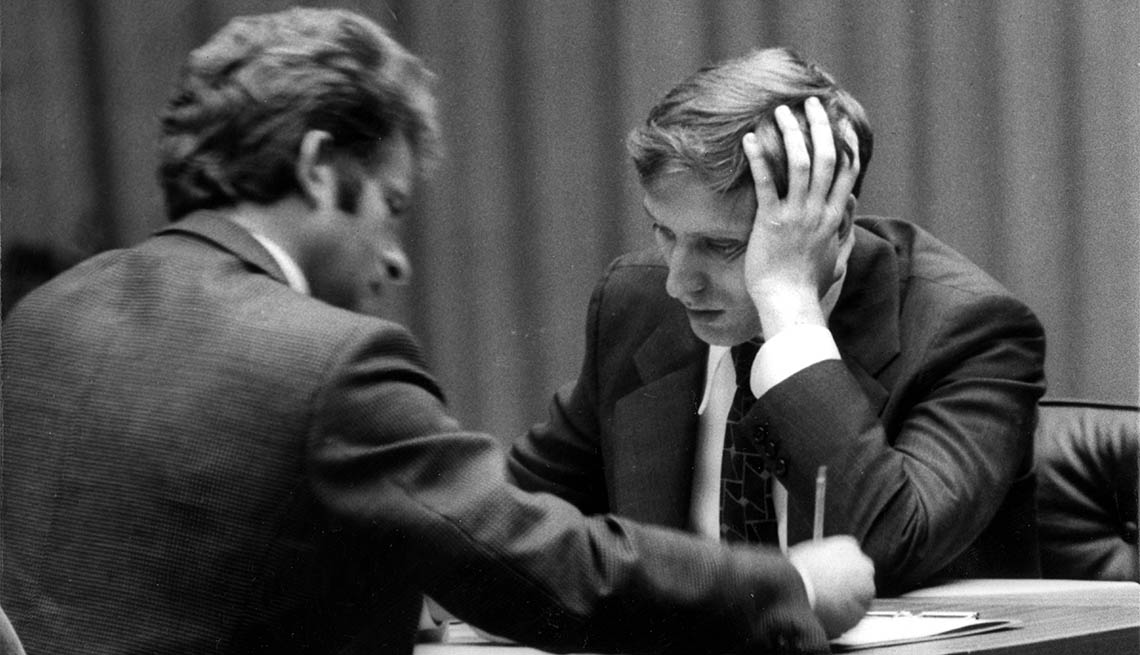September’s Today in Your History
A look at the people, events and popular culture that shaped our lives
AARP, September 2023
- |
- Photos
-
- 1 of
PHOTO BY: Keystone/Getty Images
Sept. 30: The world’s first nuclear-powered submarine, the USS Nautilus, is commissioned (1954)
On this date in 1954, the U.S. Navy commissioned the world’s first nuclear submarine, the USS Nautilus, which was 319 feet long and could stay underwater nearly indefinitely — its engine didn’t require air, and the uranium-powered nuclear reactor produced steam that propelled it faster than 20 knots. Leading the development project was Capt. Hyman G. Rickover, a Russian-born engineer who started working with the U.S. atomic program in 1946 and delivered the vessel years ahead of schedule. During construction, President Harry S. Truman had laid the keel at the shipyard, and first lady Mamie Eisenhower later ceremonially broke a bottle of champagne across the bow. After entering active service in Groton, Connecticut, the Nautilus stayed close to shore to undergo further testing and construction before fully switching to nuclear power in January 1955. The Nautilus achieved some dazzling feats during her years of service, including breaking submerged speed and distance records, and she even completed the first voyage under the geographic North Pole in August 1958. After traveling more than a half-million miles — about the distance to go around the world 20 times — the submarine was decommissioned on March 3, 1980, and became a National Historic Landmark. —Nicholas DeRenzo
-
- 2 of
PHOTO BY: Spencer Platt/Getty Images
Sept. 29: The Dow Jones suffers the largest single-day loss in its history up to that point (2008)
Fifteen years ago today, the Dow Jones Industrial Average plummeted 777.68 points in what was, at the time, the largest single-day point loss in the index’s history. The historic drop came on the heels of the House of Representatives rejecting a $700 billion bank bailout plan, resulting in a $1.2 trillion loss in market value as shocked investors dumped their stocks. “This is panic and … fear run amok,” financial consultant Zachary Karabell told CNBC. “Right now we are in a classic moment of a financial meltdown.” That fall broke a record set on Sept. 17, 2001, the first trading day after the 9/11 attacks. The Dow Jones wasn’t the only index to suffer losses that day: The S&P dropped 8.8 percent, resulting in its largest one-day loss since the 1987 crash, while Nasdaq had its biggest loss in eight years, with a decline of 9.1 percent. The year 2008 kicked off the debilitating Great Recession, which stretched on for 18 long months. The September 2008 Dow Jones losses were outdone in 2018, when the Dow dived nearly 1,600 points, then again in March 2020, when the Dow plunged 2,997 points — or nearly 13 percent. —Nicholas DeRenzo
-
- 3 of
PHOTO BY: Richard Ellis/Alamy
Sept. 28: David Brinkley retires after 54 years in broadcasting (1997)
On this date in 1997, legendary newsman David Brinkley signed off for the final time from his ABC News program This Week, drawing the curtain on a broadcast career that had gone strong for 54 years. He got his start at the age of 23, covering President Franklin D. Roosevelt, though many Americans came to know him best during the 1960s, when he shared the NBC anchor desk with Chet Huntley. In his final commentary on This Week, Brinkley got wistful, saying, “Years ago, young newspaper and radio reporters like me looked at the first flickering bluish pictures of the brand new tiny television screens and wondered if we would ever learn to work with them.” Not only did Brinkley’s talents work perfectly on TV, he defined the medium, and his dry wit and clipped delivery became a staple for generations of anchors who followed him. Signing off for the last time, Brinkley said, “On this, my last word here on ABC, I quote Shakespeare, who said, ‘All’s well that ends well.’ My time here now ends extremely well. Thank you.” Over his illustrious career, he was honored with a Presidential Medal of Freedom from President George H.W. Bush, three Peabody Awards and 10 Emmys. —Nicholas DeRenzo
-
- 4 of
PHOTO BY: Everett Collection
Sept. 27: The original incarnation of The Tonight Show, hosted by Steve Allen, premieres on NBC (1954)
The son of two vaudeville comedians, Steve Allen was practically born to be a star, and he worked his way up from being a radio actor to a talk show host and game show panelist. By 1953, WNBT New York gave Allen his own late-night show, and it was such a hit that on this date in 1954, he took the show Tonight national. Later renamed The Tonight Show, the genial series gave rise to many of the formats and tropes that came to define the late-night genre, including an opening monologue, witty repartee with a bandleader and interviews with celebrity guests. Allen, who was also a talented jazz pianist, kicked off his debut monologue seated at a piano: “In case you’re just joining us, this is Tonight, and I can’t think of too much to tell you about it, except I want to give you the bad news first: This program is going to go on forever. I wouldn’t call it a spectacular. You might say it’s more a monotonous.” That first episode included appearances by Eydie Gorme and Steve Lawrence, who sang George Gershwin’s “Mine”; Willie Mays, who talked to Allen about the upcoming World Series; and Bill Kenny, formerly of the Ink Spots, who sang “Whispering Grass.” Allen hosted the nightly show until 1956, when NBC added a sixth night, then in 1957, the network scaled back his duties to only Sunday nights, so he could focus his efforts on competing with Ed Sullivan over at CBS. —Nicholas DeRenzo
-
- 5 of
PHOTO BY: AP Photo
Sept. 26: John F. Kennedy and Richard M. Nixon square off in the first televised presidential debate (1960)
Politics was never the same after Sept. 26, 1960, when Democratic Sen. John F. Kennedy faced off against Republican Vice President Richard M. Nixon in the first nationally televised presidential debate. Before the debate, Nixon was favored to win the election, leading in polls by 6 points, but Kennedy was charismatic, handsome and high-energy — a winning combination for the new medium. The debate took place in Chicago and was helmed by the young producer Don Hewitt, who went on to create 60 Minutes. Nixon was recovering from a hospitalization after a knee injury, and he hurt his leg again on the way in to the TV station; he also refused to wear stage makeup, resulting in a pale, unshaven look. Kennedy, on the other hand, was naturally tanned from the campaign trail and opted to go beneath the makeup artist’s brush. The first debate covered domestic policy, as the candidates touched on topics such as education, health care, farming, labor and the economy, and Kennedy delivered one of the more famous lines of the evening: “I don’t believe in big government, but I believe in effective governmental action.” The following day, polls showed the dramatic impact television might have on the future of politics: After just one solid appearance in front of a national audience, Kennedy had moved ahead of Nixon in the polls — and he went on to win the general election. —Nicholas DeRenzo
-
- 6 of
PHOTO BY: Bruce Bennett Studios/Getty Images
Sept. 25: Satchel Paige pitches in a major league game at 59 years old (1965)
After years as one of the biggest stars of the Negro Leagues, Satchel Paige finally made it into the major leagues after Jackie Robinson broke the color barrier. On his 42nd birthday, July 7, 1948, Paige joined the Cleveland Indians roster, becoming the oldest rookie in MLB history. He remained a powerhouse for years, and on this date in 1965, he returned to the mound for a game with the Kansas City Athletics after a 12-year absence from the major leagues. He was 59 years, 2 months and 18 days old, making him the oldest pitcher to play in the majors. Paige joked about his reputation as an ageless phenom, often saying he kept his birth certificate tucked into a Bible — that got eaten by a goat. As part of a publicity stunt, before taking the field against the Boston Red Sox, Paige sat in a wooden rocking chair as a nurse rubbed liniment into his arm. What wasn’t a stunt was his fierce talent, and over the span of three innings, he only allowed a double to Carl Yastrzemski, receiving a roaring standing ovation after being removed from the game. As the Los Angeles Times wrote the following day, Paige had “flaunted Father Time,” and he became the first former Negro League player elected to the Baseball Hall of Fame in 1971. —Nicholas DeRenzo
-
- 7 of
PHOTO BY: CBS Photo Archive/Getty Images
Sept. 24: 60 Minutes premieres on CBS (1968)
Fifty-five years ago today, CBS launched what would become its signature news program with the premiere of 60 Minutes, a pioneering “newsmagazine” that ranks as the longest-running prime-time series in television history. Styled after a Canadian current affairs show called W5, the series was designed by creator Don Hewitt to hold short attention spans (like, self-admittedly, his own) with shorter segments that could run the gamut from deadly serious geopolitics to light-as-air pop culture; an early press release said, “The subjects might be anarchy in the cities, Charles De Gaulle, mini-skirts or Robert Kennedy.” That first episode introduced America to its original coanchors Mike Wallace and Harry Reasoner, who opened the show by saying, “Good evening. This is 60 Minutes. It’s a kind of a magazine for television, which means it has the flexibility and diversity of a magazine adapted to broadcast journalism.” That first outing included coverage of the Richard Nixon and Hubert Humphrey presidential campaigns, a report on police brutality, an interview with the attorney general, an excerpt from the Oscar-winning short film Why Man Creates, and a heady debate about the nature of reality. Missing? The trademark ticking stopwatch. At the end of that first hour, Wallace said, “If this broadcast does what we hope it will do, it will report reality.” Reasoner continued, “We realize, of course, that new approaches are not always instantly accepted,” to which Wallace replied, “We’ll see.” —Nicholas DeRenzo
-
- 8 of
PHOTO BY: CBS Photo Archive/Getty Images
Sept. 23: Richard Nixon delivers his famous Checkers speech (1952)
During the 1952 presidential election, while he was running as the vice presidential candidate alongside Dwight D. Eisenhower, Richard M. Nixon faced a political scandal that threatened to remove him from the ticket. A report in the New York Post revealed allegations that Nixon maintained a secret “slush fund” from a group of donors and that he had used $18,000 for personal expenses. Ike gave him a chance to clear his name but warned that he needed to look “as clean as a hound’s tooth” to remain on the ticket. So on Sept. 23, 1952, Nixon delivered a nationally televised address to the American people. Over the course of nearly a half hour, he went into excruciating detail about his and his wife Pat’s personal finances; he even remarked, “I should say this, that Pat doesn't have a mink coat. But she does have a respectable Republican cloth coat, and I always tell her she would look good in anything.” Over the years, the address came to be referred to as the “Checkers speech,” because of an emotional section, in which he admitted that the family had accepted one political gift: a cocker spaniel puppy named Checkers. “And you know, the kids, like all kids, loved the dog, and I just want to say this, right now, that regardless of what they say about it, we are going to keep it,” he said. Eisenhower considered the speech a rollicking success, reassuring Nixon with the line “You’re my boy,” and they won the national election handily with 442 to 89 electoral votes. —Nicholas DeRenzo
-
- 9 of
PHOTO BY: AJ Pics/Alamy
Sept. 22: Friends debuts on NBC (1994)
From its catchphrases (“We were on a break!”) to its theme song (the Rembrandts’ “I’ll Be There for You”) to its haircuts (“The Rachel”), Friends was an unstoppable sitcom juggernaut in the ’90s, and the pop culture phenomenon officially kicked off on this date in 1994, when the pilot aired on NBC. That first episode introduced viewers to a quintet of New Yorkers who spend their days hanging out in a coffeehouse called Central Perk — the chef Monica (Courteney Cox), her paleontologist brother Ross (David Schwimmer), aspiring actor Joey (Matt LeBlanc), his sarcastic roommate Chandler (Matthew Perry) and new agey musician Phoebe (Lisa Kudrow) — just as they’re on the verge of becoming a sextet: Monica’s old high school friend Rachel (Jennifer Aniston) bursts into their lives after leaving her fiancé at the altar. From the start, many critics saw promise in the ensemble. A Los Angeles Times critic wrote, “Friends has so many good moves that there’s really nothing to dislike. It’s all so light and frothy that after each episode you may be hard-pressed to recall precisely what went on, except that you laughed a lot.” The pilot was watched by about 22 million people, and by the end of the season, Friends ranked in the top 10 most-watched series on television. —Nicholas DeRenzo
-
- 10 of
PHOTO BY: Rob Tringali/Sportschrome/Getty Images
Sept. 21: The old Yankee Stadium hosts its last game (2008)
Nicknamed “The House that Ruth Built,” Yankee Stadium was a Bronx landmark from 1923 until this day in 2008, when the Bombers played their last game in their old home park. It was a make-or-break night for the Yankees, who needed to win the game to stay alive in the playoffs, and they pulled off a 7-3 victory over the Baltimore Orioles, with José Molina hitting the stadium’s last home run in the fourth inning. Pitcher Mariano Rivera finished out the game at 11:41 p.m. and said he was giving the ball to team owner George Steinbrenner: “Mr. George, he gave me the opportunity and he gave me the chance. The least I can do is to give the ball to him.” After the game, players from both teams collected dirt from the pitcher’s mound to take home as souvenirs, and Derek Jeter addressed the crowd, saying, “And we are relying on you to take the memories from this stadium, add them to the new memories to come at the new Yankee Stadium and continue to pass them on from generation to generation.” The first game in the new $1.6 billion Yankee Stadium, just across the street from its predecessor, took place on April 16 of the following year, though it kicked off with a less celebratory atmosphere: The Cleveland Indians trampled the Yankees, winning 10 to 2. —Nicholas DeRenzo
-
- 11 of
PHOTO BY: Mary Evans/CINEGUILD/Ronald Grant/Everett Collection
Sept. 20: The first Cannes Film Festival takes place in France (1946)
A little over a year after World War II ended and France was liberated, the French Riviera resort city of Cannes hosted its first International Film Festival, which got underway on this date in 1946. Nineteen countries participated, with an international jury presided over by French historian and politician George Huisman. American singer Grace Moore opened the festival with a performance in the gardens of the Grand Hôtel, and the celebratory atmosphere continued with fireworks, parades, fashion shows and even air displays. While the inaugural event would set the tone for the glamor to come in later years, the 1946 festival wasn’t without its mishaps. Alfred Hitchcock’s Notorious, for instance, was accidentally shown in reverse order! While many of the films being screened were about the recent war, the first Cannes also gave global audiences one of their earliest looks at the burgeoning Italian neo-Realism movement, as exemplified by Roberto Rossellini’s beloved Rome, Open City. Because of technical difficulties, the jury decided on an 11-way tie for the Grand Prix, and the earliest winners included David Lean’s Brief Encounter and Billy Wilder’s The Lost Weekend. Also screened during that first year? A Walt Disney short called Wet Paint, starring international sensation Donald Duck. —Nicholas DeRenzo
-
- 12 of
PHOTO BY: Michael Levin/Corbis/Getty Images
Sept. 19: Chubby Checker’s ‘The Twist’ tops the charts (1960)
Though he will forever be associated with the dance craze known as “The Twist,” Chubby Checker didn’t actually write the incredibly catchy tune. His 1960 hit single was a cover of a song originally written and released two years earlier by R&B singer Hank Ballard. On this date in 1960, the song peaked at No. 1 the Billboard Hot 100, but it wasn’t the last time it would top the charts. In fact, “The Twist” is the only non-seasonal song to hit No. 1 in non-consecutive years. After the song won over American teens in 1960, it started to catch on with adults, and by the fall of 1961, the record label even took out a full-page ad in Billboard calling the Twist “America’s newest adult dance rage.” Checker continued to earn new fans with an October appearance on The Ed Sullivan Show, and by January 1962, the single raced back up the charts to reclaim its throne for two more weeks. When all was said and done, “The Twist” clung to the Hot 100 for 39 weeks, setting a record that would last until 1988, when UB40’s “Red Red Wine” hit its 40th week on the chart. To celebrate its 60th anniversary, Billboard released a ranking of the biggest chart hits during its long history, and Chubby Checker’s Rock and Roll Hall of Fame–inducted single landed at number one … again. —Nicholas DeRenzo
-
- 13 of
PHOTO BY: David Redfern/Redferns/Getty Images
Sept. 18: Jimi Hendrix dies of an overdose at age 27 (1970)
Hailed as one of the most electrifying guitarists in rock history, Jimi Hendrix died on this date in 1970 at the Samarkand Hotel in London’s Notting Hill neighborhood. He was discovered unconscious by his girlfriend, the German figure skater Monika Dannemann, after a day of drinking red wine and smoking hashish, and was later pronounced dead at St. Mary Abbot’s Hospital. A poem was found in his room upon his death, and it was assumed by some to be a suicide note: “The story of Jesus / So easy to explain / After they crucified him / A woman, she claimed his name / […] The story of life is quicker than the wink of an eye / The story of love is hello and goodbye, until we meet again.” Coroners instead declared that he had likely choked after overdosing on 18 times the recommended dosage of Vesparax sleeping pills, a type of barbiturate. Hendrix was 27 at the time and was buried on October 1 at Greenwood Cemetery in Renton, Washington. Following Rolling Stones founder Brian Jones, who drowned in 1969, Hendrix was one of the earliest members of the so-called 27 Club, a list of ill-fated musicians who would die at 27, later including Janis Joplin, Jim Morrison, Kurt Cobain and Amy Winehouse. —Nicholas DeRenzo
-
- 14 of
PHOTO BY: NBCUniversal/Getty Images
Sept. 17: Vanessa Williams becomes the first Black Miss America (1983)
Forty years ago today, Vanessa Williams broke the pageant world color barrier when she was crowned the first Black Miss America, and it was a long time coming on that Atlantic City stage.Only sixty years earlier, the 1923 pageant had included a musical number about slavery (yikes!), and it wasn’t until 1970 that a Black contestant, Cheryl Browne of Iowa, had won her state competition and appeared on the national stage. Black contestants, in fact, were barred from competition for the first three decades of the competition. At the 1983 pageant, the 20-year-old Williams — then a junior at Syracuse University, majoring in musical theater — represented New York, and she was an early favorite, having won the preliminary talent and swimsuit competitions earlier in the week. The daughter of two music teachers, Williams played both the French horn and the mellophone, but for the talent portion, she decided to sing Barbra Streisand’s cover of “Happy Days Are Here Again.” Williams proved an unstoppable force, taking home the crown Adding to the history-making evening, the first runner-up position also went to a Black contestant, Suzette Charles of New Jersey. Of course, Williams’ reign was cut short when a nude photo scandal forced her to give up the crown, but she got the last laugh. She emerged as one of the most dominant pop stars of the 1990s and later a stage and screen star, earning 11 Grammy nominations, three Emmy nods and four top 10 hits on the Billboard Hot 100. —Nicholas DeRenzo
-
- 15 of
PHOTO BY: Peter Elmholt/Scanpix/REUTERS
Sept. 16: Bob Dylan tops the Billboard album charts at 65 (2006)
Nearly a half-century after the release of his first album in 1962, Bob Dylan proved that he still had some gas left in the tank when, on this date in 2006, his album Modern Times topped the Billboard 200 album charts. At the age of 65, he broke the record for the oldest musician to have an album reach No. 1. The album also proved to be a critical success, earning the legendary rocker two Grammys for Best Contemporary Folk/Americana Album and Best Solo Rock Vocal Performance. Modern Times held onto the record for about three years, until Dylan dethroned himself with the 2009 album Together Through Life, but his reign finally came to an end in 2011, when the 85-year-old Tony Bennett released Duets II — the first No. 1 album of the crooner’s illustrious career. Of course, we’re sure Dylan isn’t too sad about losing this one particular record, as he continues to rack up a slew of unprecedented trophies, including becoming the first musician to win the Nobel Prize for Literature, in 2016. —Nicholas DeRenzo
-
- 16 of
PHOTO BY: Robert Keziere/Greenpeace
Sept. 15: Greenpeace is founded (1971)
In 1970, a group of environmentalists known as the Don’t Make a Wave Committee met in Vancouver with the goal of halting U.S. nuclear weapons testing in Alaska. It was there that the phrase “green peace” was first uttered: Irving Stowe flashed a peace sign and said “Peace!” as he was leaving a meeting, and the Canadian ecologist Bill Darnell replied, “Make it a green peace.” When they decided to sell buttons as a fundraiser, they couldn’t make the whole phrase fit, so they squished the words together as Greenpeace. On this date in 1971, the newly formed group set out on their first mission, sailing a boat called the Phyllis Cormack out of Vancouver to “confront the bomb” in the Aleutian Island of Amchitka, where the nuclear testing was planned. Unfortunately, they never made it to the island, and the military ended up exploding the underground nuclear bomb, which opened up fissures on the island and released radiation into the environment. Nevertheless, the burgeoning movement saw the mission as a successful “mind bomb,” an idea that could change hearts and minds, and ultimately mass protests against such testing led the U.S. Atomic Energy Commission to abandon the Aleutian Islands testing site. No small feat for a self-declared group of hippies! —Nicholas DeRenzo
-
- 17 of
PHOTO BY: Herb Ball/NBCU Photo Bank
Sept. 14: The Golden Girls debuts on NBC (1985)
On this date in 1985, NBC premiered its new hit sitcom The Golden Girls, which featured a trio of senior characters sharing a house in Miami: the widowed art museum administrator Blanche Hollingsworth (later Devereaux), played by Rue McClanahan; the widowed grief counselor Rose Nylund, played by Betty White; and the divorced substitute teacher Dorothy Zbornak, played by Bea Arthur. In those early days, the sitcom looked slightly different than the Emmy-winning hit audiences would come to love. The original last member of the Fab Four was a housekeeper/cook named Coco (Charles Levin), who was the first openly gay character in any Walt Disney Company production. During the pilot, Dorothy’s Sicilian mother, Sophia Petrillo (Estelle Getty), moves in with the crew after her nursing home burns down, and Getty was such an immediate hit with the audience that producers swapped out Coco for Sophia, who was originally planned as only a recurring guest role. Also different in that first go-round? Blanche was missing her trademark Southern accent. The inaugural season was an immediate critical success, and during its first outing at the Emmys The Golden Girls took home Best Comedy Series, Best Writing for a Comedy Series and Best Actress for Betty White. Over the years, all the other leads would go on to take home their own Emmys — a feat matched only by All in the Family, Will & Grace and Schitt’s Creek. —Nicholas DeRenzo
-
- 18 of
PHOTO BY: AP Photo
Sept. 13: Mary Kay Ash launches her namesake cosmetic empire (1963)
After working for decades as a salesperson, Mary Kay Ash was fed up with a business in which younger, less experienced men would often get promoted above her and earn higher salaries. In 1963, she decided to take matters into her own hands and planned to open a cosmetics company with her second husband. A month before the business was set to open, he died suddenly of a heart attack over breakfast one morning, while reviewing financial documents. Ash didn’t let that stop her, and 60 years ago today, she officially launched Beauty by Mary Kay with the help of her children Ben, Marilyn and Richard. Ben invested $4,500 to get the company off the ground, and 20-year-old Richard took over the books. Together they opened a modest store in Dallas, with nine salespeople, and she began by selling skin-care products developed by an Arkansas tanner who had noticed how young the materials used in leather-tanning had made his hands look. Within a year of the company’s founding, wholesale sales approached $1 million, and Mary Kay developed into a giant of multilevel marketing that allowed everyday women to sell cosmetics through home demonstrations. By the time Ash died, at age 83 in 2001, Mary Kay was a billion-dollar enterprise with some 850,000 sales consultants in more than three dozen countries. —Nicholas DeRenzo
-
- 19 of
PHOTO BY: Bettman/Getty Images
Sept. 12: John F. Kennedy marries Jacqueline Bouvier in Newport, Rhode Island (1953)
Seventy years ago today, Massachusetts Senator John F. Kennedy married Jacqueline Lee Bouvier at St. Mary’s Roman Catholic Church in Newport, Rhode Island. She wore an ivory tissue silk gown, a rosepoint lace veil, a tiara embellished with orange blossoms, a pearl choker and a diamond bracelet given to her by her future husband. The wedding party included many notable Americans, such as Robert F. Kennedy, Ted Kennedy, Ethel Kennedy, Sargent Shriver, Senator George Smathers and journalist Charles Bartlett, who is credited with setting up the bride and groom on their first blind date. In the crowd were some 600 senators, diplomats and society figures, while nearly 2,000 cheering fans waited outside, some of whom had traveled from far and wide on charter buses. Life magazine had featured the couple, on a sailboat off Cape Cod, on the cover of its July 1953 issue, and reported on the nuptials as follows: “The marriage of Washington’s best-looking young senator to Washington’s prettiest inquiring photographer took place in Newport R.I. this month and their wedding turned out to be the most impressive the old society stronghold had seen in 30 years. … There were 900 guests at their reception and it took Senator and Mrs. Kennedy two hours to shake their hands. The whole affair, said one enthusiastic guest, was ‘just like a coronation.’” —Nicholas DeRenzo
-
- 20 of
PHOTO BY: Everett Collection
Sept. 11: The Carol Burnett Show premieres on CBS (1967)
By the 1960s, Carol Burnett was already a beloved comedic voice. She had earned a Tony nomination for her role in Broadway’s Once Upon a Mattress and won a 1962 Emmy for The Garry Moore Show. And by 1967, she was still under a CBS contract, which allowed her to create 30 episodes of a one-hour series, no matter the genre. She went to executives with the idea of creating a variety show, but was met with hesitation. “The network didn’t want me to do it,” she later recalled. “They said the comedy variety show was a man’s game. It was Milton Berle, Jackie Gleason, Dean Martin.” They had hoped she’d make a sitcom, but Burnett stood her ground, and on this date in 1967 she debuted her eponymous variety show, with special guest Jim Nabors and fellow ensemble members Vicki Lawrence, Harvey Korman and Lyle Waggoner. (Future regular Tim Conway wouldn’t appear until episode four.) The pilot episode included the debut of Burnett’s iconic Charwoman character and her impersonation of Shirley Temple, the first installation of the recurring “Carol and Sis” sketch and a Broadway medley in which Burnett and Nabors sang “Cool” from West Side Story, “Till There Was You” from The Music Man and more. Of course, it goes without saying that the doubting network executives were dead wrong. The show would go on to become one of the most iconic comedy series of all time, attracting 30 million viewers an episode and earning 25 Emmys over the span of its 11 side-splitting seasons. —Nicholas DeRenzo
-
- 21 of
PHOTO BY: Denis O'Regan/Getty Images
Sept. 10: Nirvana releases their hit single “Smells Like Teen Spirit” (1991)
On this date in 1991, the grunge genre reached perhaps its greatest artistic peak when Seattle-based alternative band Nirvana released “Smells Like Teen Spirit” as a single. Singer and guitarist Kurt Cobain penned the anthem as an homage to one of his favorite bands, later saying, “I was trying to write the ultimate pop song. I was basically trying to rip off the Pixies. I have to admit it. When I heard the Pixies for the first time, I connected with that band so heavily that I should have been in that band — or at least a Pixies cover band. We used their sense of dynamics, being soft and quiet and then loud and hard.” The song got its name in a roundabout way from Bikini Kill lead singer Kathleen Hanna, who found a deodorant in the grocery store called Teen Spirit, thought it was a hilarious name and then later wrote “Kurt smells like Teen Spirit” on Cobain’s wall with a Sharpie. The opening track and lead single of Nirvana’s seminal sophomore album went on to become a generation-defining hit, graduating from college radio and the alternative charts to peak at number 6 on the Billboard Hot 100. Rolling Stone later ranked “Smells Like Teen Spirit” fifth on its list of the 500 greatest songs of all time. —Nicholas DeRenzo
-
- 22 of
PHOTO BY: CBS Photo Archive/Getty Images
Sept. 9: Elvis Presley makes his first appearance on The Ed Sullivan Show (1956)
On this date in 1956, more than 60 million viewers — or about 83 percent of the TV-watching audience at the time — tuned in to watch a buzzy new rock star named Elvis Presley perform on The Ed Sullivan Show for the first time. The future “King of Rock and Roll” had already appeared on competitors like The Steve Allen Show and The Milton Berle Show before Sullivan agreed to invite Presley on the show, paying him an unprecedented $50,000 for three appearances — the largest sum ever paid for a performer on TV. Funnily enough, for his first performance on the legendary show, neither Presley nor Sullivan were in the show’s iconic New York studios. The host was recovering from injuries after a near-fatal car accident, with British actor Charles Laughton filling in for him, while Presley performed from the CBS Television City in Los Angeles, since he was out west to film his first movie, Love Me Tender. Presley told the audience that his appearance on the show was “probably the greatest honor I have ever had in my life” before singing “Don’t Be Cruel,” “Love Me Tender,” a cover of Little Richard’s “Ready Teddy” and “Hound Dog.” Laughton remarked of the set, “Well, what did someone say? Music hath charms to soothe the savage breast?” While Sullivan had originally not wanted the controversial singer (and his hips) to appear on his family-friendly show, he ended up complimenting Presley after his third performance, calling him “a real decent, fine boy” and saying, “We’ve never had a pleasanter experience on our show with a big name than we’ve had with you.” —Nicholas DeRenzo
-
- 23 of
PHOTO BY: King World Productions/Everett Collection
Sept. 8: Oprah Winfrey airs the first episode of her long-running series (1986)
Before she became “Queen of All Media,” Oprah Winfrey was a popular local news anchor who got her big break in 1984 when she took over the low-rated Chicago talk show AM Chicago and transformed it into a ratings juggernaut. She proved such an instant success, in fact, that the series was renamed The Oprah Winfrey Show the following year. By December 1985, Winfrey would reach an even bigger audience when she costarred as Sofia in Steven Spielberg’s critically acclaimed adaptation of The Color Purple, earning one of the film’s 11 Oscar nominations, for Best Supporting Actress, and her star only continued to rise. On this date in 1986, she brought her charisma to the widest stage yet when her show went national for the first time. That first episode, entitled “How to Marry the Man/Woman of Your Choice,” set the tone for the talk show that would become a cultural phenomenon and a record-breaking ratings and Emmy force. After the first episode, The Hollywood Reporter critic Miles Beller wrote, “[C]ontrary to what the fusillade of hype might lead you to believe, The Oprah Winfrey show isn’t the cure for cancer or the answer to how many angels can dance on the head of a pin. But in a world run amok with pompous talk show pitchmen, Oprah Winfrey is something different.” —Nicholas DeRenzo
-
- 24 of
PHOTO BY: Hulton Archive/Getty Images
Sept. 7: The first Miss America Pageant takes place in Atlantic City (1921)
How do you keep summer revelers around in a beach town for a few extra nights after Labor Day? In September 1921, organizers in Atlantic City decided to throw a beauty pageant, which kicked off on Wednesday the 7th and featured eight contestants from across the Northeast — it birthed an annual tradition that would later come to be known as Miss America. As part of a Mardi Gras–inspired festival called the “Fall Frolic,” hoteliers and other business leaders invited newspapers from around the region to send their “most beautiful” girls, who had been chosen through a series of photo contests. When the pageant started, the finalists dressed as sea nymphs and entered town on a barge alongside a local celebrity known as King Neptune. The following day, a winner was crowned: 16-year-old Miss Washington, D.C., Margaret Gorman, who had been the youngest and the shortest contestant, was awarded a Golden Mermaid trophy (which she’d have to give back the following year). That summer, The Washington Herald had written of Gorman, “A photograph unfortunately gives no idea of her fine coloring, or rare charm. She has a wealth of golden hair, the bluest of blue eyes and fair skin. Miss Gorman stands well in her classes, has a charming manner and is a bright conversationalist.” In other words, she set the standard for more than a century of future Miss Americas. —Nicholas DeRenzo
-
- 25 of
PHOTO BY: Brian Bahr/AFP/Getty Images
Sept. 6: Cal Ripken Jr. plays in his record-breaking 2,131st game (1995)
If you were the kind of student who valued perfect attendance, here’s a baseball record that will certainly excite you: On this date in 1995, Baltimore Oriole Cal Ripken Jr. played in his 2,131st consecutive game, besting a long-standing record set by Lou Gehrig 56 years earlier. He had started the impressive run way back on May 30, 1982, and among the crowd of 46,272 fans in Camden Yards on that record-breaking day were President Bill Clinton, Vice President Al Gore and Hall of Famer Joe DiMaggio. Ripken celebrated the end of the game by jogging around the ballpark for 10 minutes, high-fiving well-wishers, and the roaring ovation lasted for 22 minutes and 15 seconds. But Ripken remained humble about his accomplishment, and as he later described in an interview, all he had to do to achieve his goal was show up for work: “I never really allowed myself to think about the streak. It was very simple: I wanted to come to the ballpark, I wanted to play, I wanted to help the team win.” He would keep the streak alive through Sept. 20, 1998, when the then-38-year-old decided to sit out what would have been game 2,633, the last home game of the season. As he told Orioles manager Ray Miller, “I think it’s time.” —Nicholas DeRenzo
-
- 26 of
PHOTO BY: Wilbur T. Pippin/Tampa Bay Times/AP photo
Sept. 5: Jack Kerouac publishes On the Road (1957)
Massachusetts-born Beat poet and novelist Jack Kerouac would forever shake up 20th-century American literature with the release of his sophomore novel On the Road on this day in 1957. The autobiographical road novel follows friends Sal Paradise (based on Kerouac himself) and Dean Moriarty (based on Neal Cassady) as they drive across the country, get drunk, spark up love affairs and listen to jazz. Inspired by bebop musicians, Kerouac had created his masterwork in an equally fast-paced and improvisatory style: He taped together about 120 feet of paper, created an enormous scroll that he fed into his typewriter, allowing him to keep writing without stopping. Within three weeks, his first draft was completed. In his rave review for The New York Times, Gilbert Millstein compared the book to Ernest Hemingway’s The Sun Also Rises, noting that it could similarly come to define a generation and calling it “the most beautifully executed, the clearest and the most important utterance yet made by the generation Kerouac himself named years ago as ‘beat,’ and whose principal avatar he is.” On the Road would go on to become one the best-selling novels of 1957, alongside Grace Metalious’ Peyton Place, and according to publisher Viking, it continues to sell 100,000 copies of its paperback editions every year. —Nicholas DeRenzo
-
- 27 of
PHOTO BY: Fred Prouser/Reuters
Sept. 4: Kelly Clarkson wins the first season of American Idol (2002)
On this date in 2002, American Idol crowned its first winner, 20-year-old Texas cocktail waitress Kelly Clarkson. During the season finale episode, broadcast live from the Kodak Theatre in Hollywood, Clarkson and 23-year-old finalist Justin Guarini each sang their own renditions of two original songs that were written with the goal of propelling them up the pop charts, “Before Your Love” and “A Moment Like This.” An astonishing 15.5 million viewers cast their ballots, and Clarkson came out on top with 58 percent of the vote. After the announcement, she returned to the microphone to perform “A Moment Like This” again — this time through tears — and the single went on to prove that Fox’s gamble with reality singing competitions would really pay off: It leapt from 52 to 1 on the Billboard Hot 100, breaking a record for the fastest jump to the top of the charts set more than 38 years earlier by the Beatles. (Clarkson would later break her own record again when “My Life Would Suck Without You” rocketed from 97 to 1.) In the years since her coronation, Clarkson has gone on to become a pop-music powerhouse, landing three Grammys, 11 top 10 hits, and four Daytime Emmys for her popular talk show. —Nicholas DeRenzo
-
- 28 of
PHOTO BY: Werner Otto/VISUM/Redux
Sept. 3: Ringo Starr returns to the Beatles after quitting in frustration (1968)
In late August 1968, during the drama-filled recording sessions for the White Album, Ringo Starr decided to call it quits, temporarily reducing the Fab Four to a trio. As he recalled it, “I left because I felt two things: I felt I wasn’t playing great, and I also felt that the other three were really happy and I was an outsider.” Only 10 days later, on Sept. 3, the rest of the Beatles decided to send Starr a note begging him to come back. As Starr recalled in Anthology, “I got a telegram saying, ‘You’re the best rock ‘n’ roll drummer in the world. Come on home, we love you.’ So, I came back. We all needed that little shake-up.” George Harrison covered Starr’s drum kit with flowers for the occasion, and Ringo said, “I felt good about myself again. We’d got through that little crisis, and it was great.” In the end, he ended up contributing his first original song to the album, “Don’t Pass Me By,” and the album later landed at number 29 on the Rolling Stone list of the 500 greatest albums of all time. —Nicholas DeRenzo
-
- 29 of
PHOTO BY: Andrew Innerarity/REUTERS
Sept. 2: Diana Nyad completes her historic swim from Cuba to Florida (2013)
Ten years ago today, 64-year-old American swimmer Diana Nyad completed her historic 110-mile swim from Havana to Key West, marking the first time someone had undertaken the treacherous journey without the use of a shark cage. The Straits of Florida are notorious for being infested with sharks and jellyfish, but after 35 years of planning and four failed attempts, Nyad finally landed on the shore of Smathers Beach, following a 53-hour journey, in which she had been trailed by support kayakers. Sunburned but proud, she addressed the assembled crowd by saying, “I have three messages. One is we should never, ever give up. Two is you never are too old to chase your dreams. Three is it looks like a solitary sport, but it’s a team.” It certainly wasn’t an easy journey: Winds blew aggressively for 49 hours, and at certain points, she was vomiting while swimming and singing herself lullabies to stay calm. Nyad had also learned from her previous swims, and after having been felled by jellyfish stings on her tongue last time around, she wore a special mask to protect against them. Her story was so inspiring, in fact, that she’s the subject of a sports biopic releasing this year, starring Annette Bening as Nyad and Jodie Foster as her best friend and trainer Bonnie Stoll. —Nicholas DeRenzo
-
- 30 of
PHOTO BY: Chester Fox/Camera Press/Redux
Sept. 1: Bobby Fischer defeats Boris Spassky to become the first American-born world chess champion (1972)
On this date in 1972, the 29-year-old chess prodigy Bobby Fischer defeated Soviet player Boris Spassky in Reykjavik, Iceland, to become the world chess champion, marking the first time an American-born player took home the title. (Wilhelm Steinitz, the first world champion, had become a naturalized U.S. citizen in the 1880s.) Fischer first came to prominence when he won the U.S. chess championship at the age of 14, and by the time 1972 rolled around, he was quoted as saying, “I’m tired of being the unofficial champion.” The fight for the title kicked off in July, and tensions were high between Fischer and the 35-year-old Soviet: The American delayed play until the pot was increased, and Spassky responded by refusing to play until Fischer issued an apology. The rivals started their final game, the 21st, on Aug. 31, and it was adjourned overnight, with Fischer up 12½ to 8½ points. But they wouldn’t face off again: When he realized he had no path to victory, Spassky resigned over the phone. The Brooklyn-based chess champ took home $156,000, and The New York Times wrote of his victory: “Some grandmasters insist Bobby is the greatest chess player of all time, a proposition inherently impossible of proof. What is beyond debate is that Fischer is the greatest living chess player, and that no one now visible on the chess horizon seems close to his level.” In later years, Fischer became increasingly controversial throughout his life, denying the Holocaust, calling 9/11 “wonderful news” and engaging in a tournament held by the Serbian government at the height of the Bosnian genocide (defying U.S. sanctions and international law in the process). —Nicholas DeRenzo

